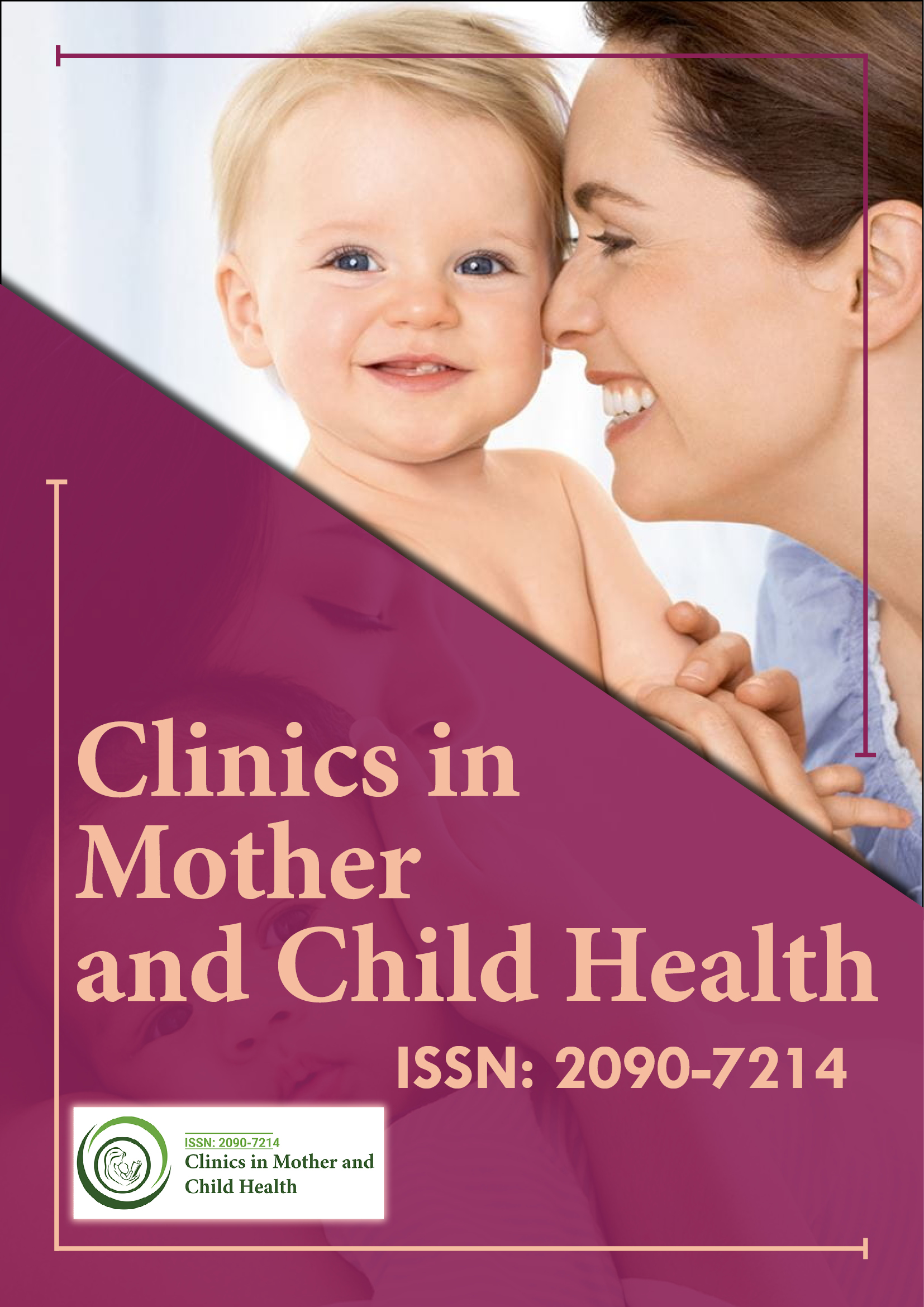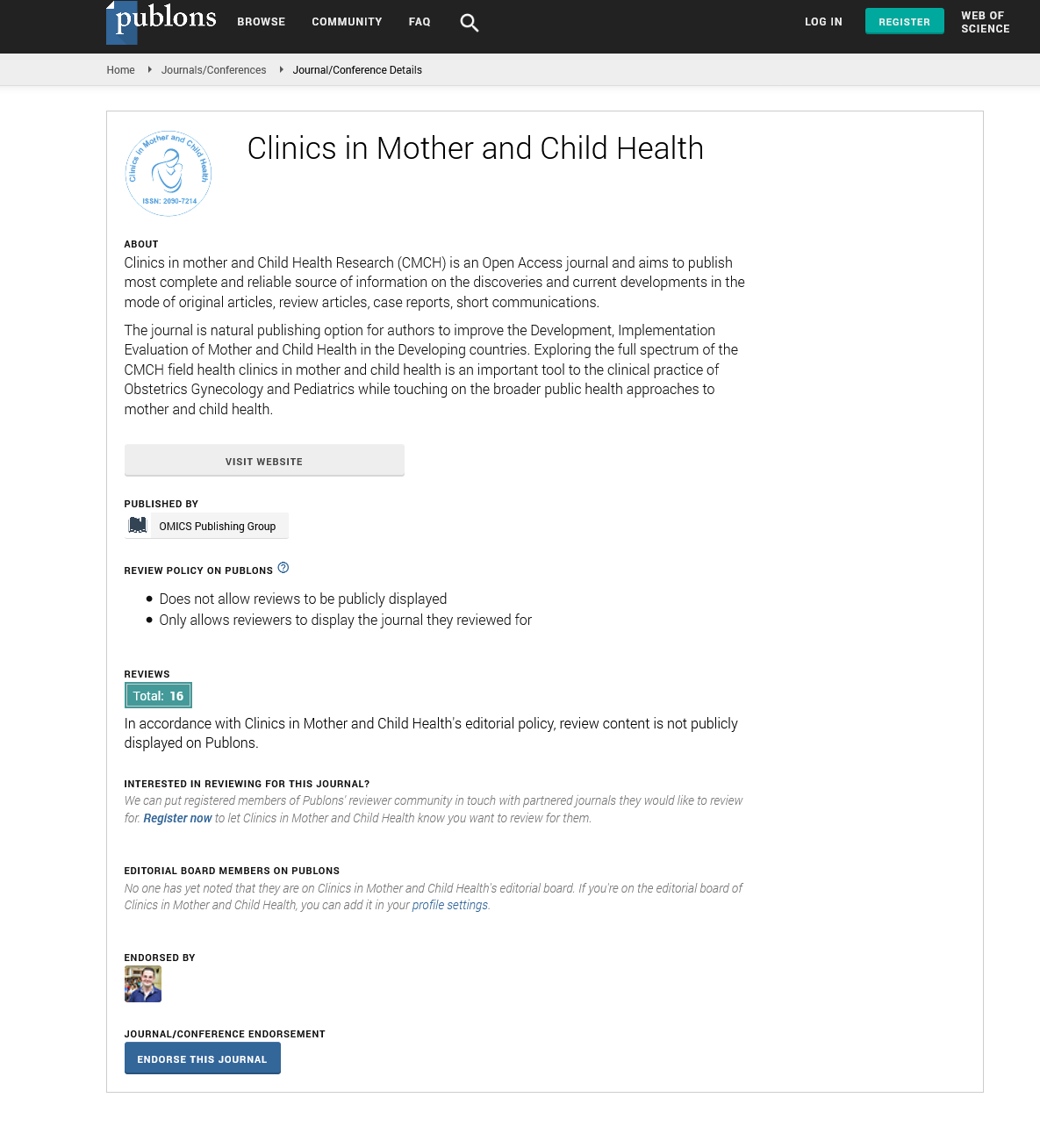Indexed In
- Genamics JournalSeek
- RefSeek
- Hamdard University
- EBSCO A-Z
- Publons
- Geneva Foundation for Medical Education and Research
- Euro Pub
- Google Scholar
Useful Links
Share This Page
Journal Flyer

Open Access Journals
- Agri and Aquaculture
- Biochemistry
- Bioinformatics & Systems Biology
- Business & Management
- Chemistry
- Clinical Sciences
- Engineering
- Food & Nutrition
- General Science
- Genetics & Molecular Biology
- Immunology & Microbiology
- Medical Sciences
- Neuroscience & Psychology
- Nursing & Health Care
- Pharmaceutical Sciences
Commentary - (2025) Volume 22, Issue 3
Exclusive Breastfeeding and Its Influence on Infant Morbidity Patterns
Maria Giaginis*Received: 28-Feb-2025, Manuscript No. CMCH-25-29054; Editor assigned: 03-Mar-2025, Pre QC No. CMCH-25-29054; Reviewed: 17-Mar-2025, QC No. CMCH-25-29054; Revised: 22-Mar-2025, Manuscript No. CMCH-25-29054; Published: 31-Mar-2025, DOI: 10.35248/2090-7214.25.22.513
Description
Exclusive Breast Feeding (EBF), defined as feeding infants only breast milk for the first six months of life without the addition of any other foods or liquids, not even water, is widely recognized as a fundamental public health strategy for improving child survival and health outcomes. The World Health Organization (WHO) and United Nations Children's Fund (UNICEF) strongly advocate for exclusive breastfeeding during the first six months, followed by the introduction of complementary foods alongside continued breastfeeding up to two years or beyond. Despite global recommendations, the rates of exclusive breastfeeding remain suboptimal in many parts of the world, particularly in low- and middle-income countries where the burden of infant morbidity and mortality is disproportionately high. This study explores the critical relationship between exclusive breastfeeding practices and patterns of infant morbidity during the first year of life. The primary objective is to evaluate whether infants who are exclusively breastfed for six months exhibit reduced susceptibility to common childhood illnesses such as diarrhea, respiratory infections, fever, and malnutrition, compared to those who are partially breastfed or not breastfed at all. In doing so, the study also aims to provide region-specific insights into how breastfeeding behaviors influence health outcomes in diverse socioeconomic and cultural settings.
Breast milk provides all the necessary nutrients in the appropriate proportions and contains vital immunological components that protect infants against infections and chronic conditions. Immunoglobulins, lactoferrin, lysozyme, and oligosaccharides present in breast milk act as protective agents against pathogenic organisms. Furthermore, breast milk promotes the development of the infant’s immune system and contributes to the formation of a healthy gut microbiota, which is crucial for long-term health. Several observational and cohort studies have consistently demonstrated that exclusively breastfed infants have a lower incidence of gastrointestinal infections, acute otitis media, and lower respiratory tract infections. In addition to its protective effect against infections, exclusive breastfeeding has been associated with a lower risk of hospitalization in the first year of life. The natural antibodies and anti-inflammatory agents in breast milk reduce the severity of illnesses when they occur, thereby lessening the need for medical intervention. Moreover, the nutritional adequacy of breast milk supports optimal growth and cognitive development, reducing the risk of stunting and wasting, which are prevalent forms of child malnutrition.
This study involves a cross-sectional analysis of breastfeeding practices and infant morbidity data collected from a representative sample of mothers attending child welfare clinics. Detailed interviews and structured questionnaires were used to gather information on breastfeeding duration, exclusivity, and the occurrence of illnesses in infants aged 0 to 12 months. Morbidity patterns were assessed through maternal reports and cross-verified with health records where available. The study population includes both urban and rural respondents to capture a comprehensive view of breastfeeding behaviors and associated health outcomes across different community settings. Preliminary findings indicate a strong inverse correlation between the duration of exclusive breastfeeding and the frequency of illness episodes in infants. Infants who were exclusively breastfed for at least six months experienced significantly fewer episodes of diarrhea and respiratory infections than those who received mixed feeding or formula supplementation within the first six months. Additionally, the study highlights several sociocultural and economic barriers that hinder optimal breastfeeding, including early return to work, lack of family support, misconceptions about breast milk sufficiency, and inadequate maternal nutrition.
The findings reaffirm the protective role of exclusive breastfeeding in reducing infant morbidity. The evidence underscores the need for intensified efforts to promote and support exclusive breastfeeding, particularly in settings with high infant morbidity and mortality rates. Interventions should include breastfeeding education during antenatal care, postnatal counseling, creation of breastfeeding-friendly workplaces, and community-based peer support programs. Policymakers and healthcare providers must work collaboratively to implement comprehensive breastfeeding promotion strategies that address both knowledge and structural barriers. This research contributes to the growing body of literature advocating for breastfeeding as a cost-effective, accessible, and life-saving practice. By emphasizing the direct link between exclusive breastfeeding and lower infant morbidity rates, the study provides compelling evidence for investing in maternal and child health programs that prioritize breastfeeding promotion. Ultimately, enhancing exclusive breastfeeding practices can lead to substantial improvements in infant health outcomes, decreased healthcare costs, and progress toward achieving global child survival goals.
Citation: Giaginis M (2025). Exclusive Breastfeeding and Its Influence on Infant Morbidity Patterns. Clinics Mother Child Health. 22:513.
Copyright: © 2025 Giaginis M. This is an open-access article distributed under the terms of the Creative Commons Attribution License, which permits unrestricted use, distribution and reproduction in any medium, provided the original author and source are credited.

